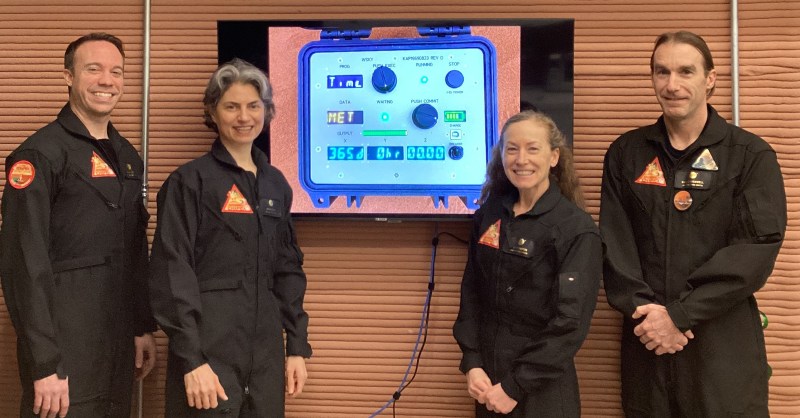NASA reveals simulated Mars habitat for volunteers’ yearlong stay
As many of us experienced during lockdowns, it’s not easy to stay sane and productive in an enclosed environment. But four volunteers for a NASA experiment have tested this to its limits by spending more than a year confined to a simulation of a Mars outpost.
In NASA’s Crew Health and Performance Exploration Analog (CHAPEA) mission, four volunteers have spent 378 days in a simulated Mars environment designed to look and feel as much like Mars as is possible here on Earth. They lived in a 3D-printed habitat, performed science jobs, and could only communicate with the outside world via ground control.
“For more than a year, the crew simulated Mars mission operations, including ‘Marswalks,’” grew and harvested several vegetables to supplement their shelf-stable food, maintained their equipment and habitat, and operated under additional stressors a Mars crew will experience, including communication delays with Earth, resource limitations, and isolation,” NASA explained in a statement.
The idea was to test what some of the health implications were for crew members on long-duration missions. With a limited diet and some high exercise demands — such as performing simulated Marswalks using a treadmill where they had to walk for long periods — researchers wanted to check the effects of these conditions on their physical health. Plus, there was also the important issue of group psychology and mental health during such a long period of relative isolation.
Now that this phase of the experiment has come to an end, the crew is getting ready to leave their habitat for the first time in a year. They will be exiting the simulated Mars environment this Saturday, July 6.
How to watch the crew members leave their habitat
If you’re curious to see what it’s like to leave an enclosed environment after more than a year, NASA will be live-streaming the crew members as they leave their habitat on Saturday, July 6. The coverage will include a ceremony to welcome the crew back to “Earth” life, plus discussions with NASA experts about the experiment and its potential for future Mars missions. Panelists include Kjell Lindgren, a NASA astronaut and deputy director of flight operations, plus several scientists and engineers who worked on the mission.
Coverage begins at 5 p.m. ET/2 p.m. PT on July 6 , and you can watch either on NASA’s streaming service NASA+ or via YouTube by heading to the YouTube page for the event or by using the video embedded above.
Source: www.digitaltrends.com


